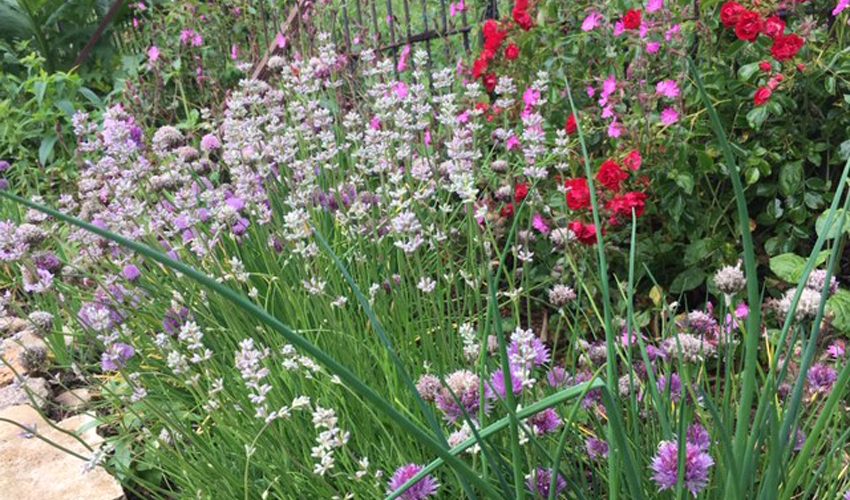One of the things I’ve enjoyed over the past 4 years as I’ve been restoring my veg patch (previously an unloved mass of brambles and knotweed) to its rustic glory is seeing more and more bees and butterflies, and many others, flitting around. Obviously the decline of our insects and fears of losing our pollinators have been a big subject in the media lately, and I am definitely someone who cares passionately about environmental issues like these, so I have been trying to do my part, and this year it is really paying off.
In the veg patch I have several raised beds, dedicated to growing veg. These are predominantly “no-dig” beds, which helps me to keep weeds down and is doing wonders for my soil. In amongst my veg, I have planted lots of calendula which has self seeded this year, violas and nasturtiums. In other areas of the veg patch, I have planted dedicated herb beds (far more than I need) and flower beds, as well as a combination of the two. I’ve also got a patch of wildflower Valerian which I have left to Mother Nature.
I can hand on heart say that I see far more vital wildlife in my veg patch now. The cold (and wet) June has been problematic for bees, so it’s nice to see so many of them finding food in my veg patch. I’ve even got regular Hummingbird Moths to the valerian patch – they love it, and they are incredible to see! (I can’t get a photo of them because they fly off, but google them – they’re fab!)
Here are the three fairly simple things that I have done, which I believe have made a big difference, as well as actually making my gardening approach a little more relaxed and enjoyable:
- Planted flowers and herbs
I do not need anywhere near this many herb plants in my life, but at a relatively cheap price two or three years ago, I planted a load of flowering herbs and they have just taken off. They look amazing, provide me with fresh herbs, and attract SO many bees. I’ve made sure to add extra flowers too, with lots of osteospermum, roses and rudbeckia. If you just had a single pot, I’d say definitely plant some chives – they’re useful in the kitchen, the flowers look lovely and the bees love them. If you’ve got a bit more space, but not enough for veg, then a medley of 3 or 4 flowering herbs is great to plant. If you’ve got lots of space, then throw in as much as you can! - Kept it natural and organic
No dig has worked really well for me in terms of keeping pests and weeds down and I really recommend it. I don’t use anything chemical – no pesticides, no weedkiller – and I accept a few losses to slugs. If you have a bigger plot or are growing in raised beds, I’d definitely look into it more. I also try not to fight too much against nature as a general rule…my flower beds are full of pink campions and wild foxgloves that could easily be seen as weeds, and I have several patches of stinging nettles, but I just leave them in to do their thing and try to cut them back before they go to seed. I also let the bindweed climb up the fence – it’s kind of pretty when it flowers, so I just try to keep on top of it in the middle of raised beds etc where it can interfere with my veg. - Left a few things to wildlife
It’s easy to quickly pull things up as soon as they bolt, but I like to leave some things in the veg patch when they flower, like Wild Rocket and Mizuna for example. They provide extra food for insects, and they look nice too. When the seeds start to form, then I pull them up (if I remember!) I also tend not to harvest many globe artichokes, preferring to let them flower for the bees. I even sacrificed the last of my strawberries, removing the netting and letting the birds eat them… sharing is caring!

